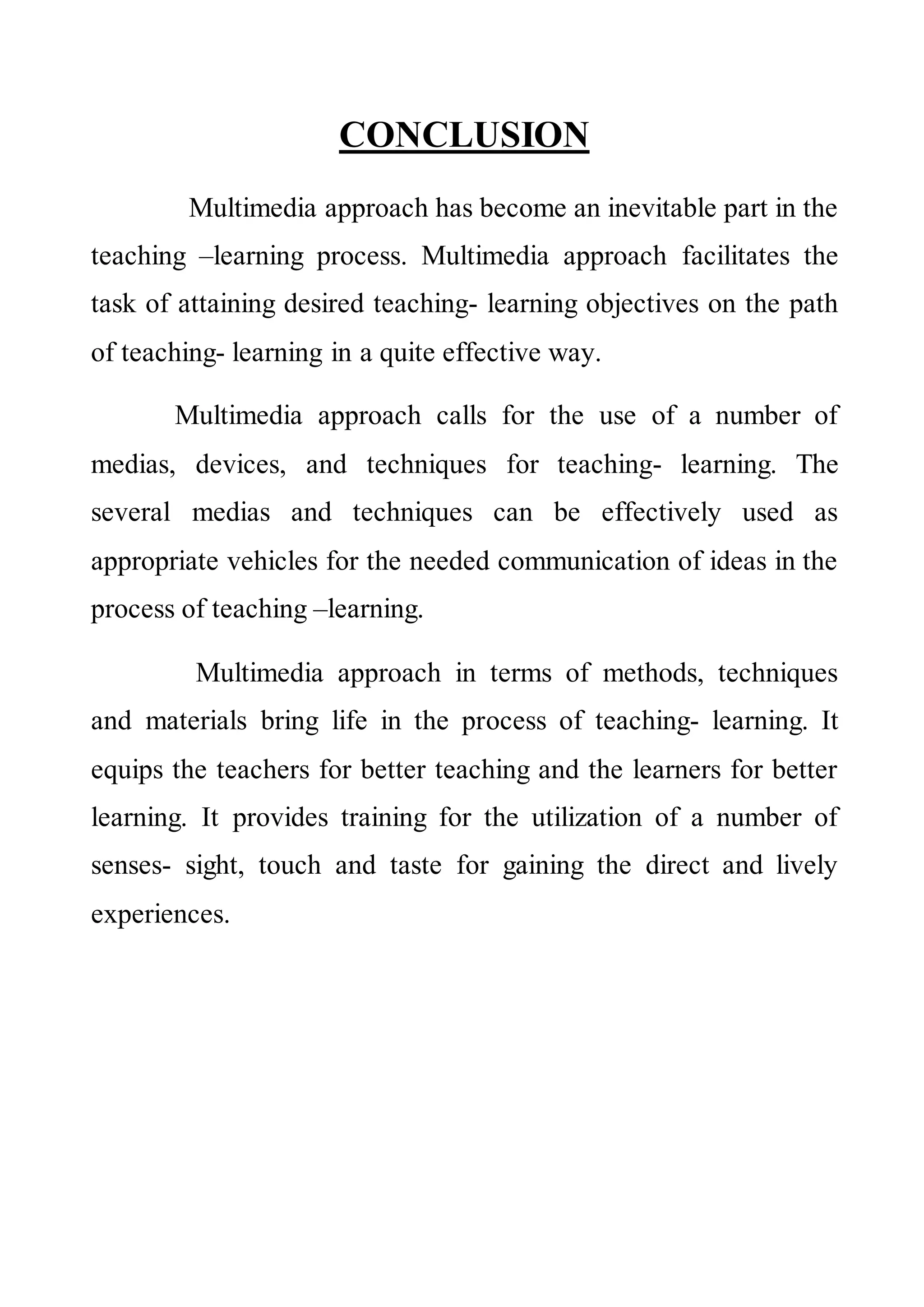Multimedia is an important innovation in educational technology that can improve teaching and learning. It involves using various media like text, pictures, sound, animation and video together in a program. Multimedia approaches can be classified in different ways, such as by instructional methods, auto-instructional techniques, mass communication tools, audiovisual materials, experiential learning, and teaching resources. Implementing multimedia approaches requires changes to organizational structures, infrastructure, teacher training, and attitudes. It provides benefits like making learning more engaging, individualized, and memorable for students.














